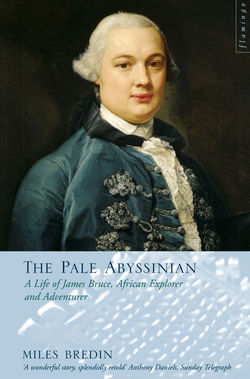Читать книгу The Pale Abyssinian: The Life of James Bruce, African Explorer and Adventurer - Miles Bredin - Страница 6
INTRODUCTION
ОглавлениеJames Bruce was one of the world’s greatest explorers. A full century before the age of Stanley and Livingstone, he ventured deep into the African hinterland and added vast tracts of country to the map of the known world. His greatest achievements were in Abyssinia where he discovered the source of the Nile, a riddle that had preoccupied the world since the ancient Egyptians began to wonder where all the water came from. In his success, however, lay his failure. It was the wrong Nile – the Blue rather than the White – and he was so far in advance of any other African explorers that no one believed him anyway. It was another hundred years before Speke and Burton made their discovery of Lake Victoria and finally solved the ‘opprobrium of geographers’ that had for so long obsessed the world. Bruce was of course not the first to discover the source of the Nile; the Ethiopians were, from ancient times, well aware that the source lay in their country.
Bruce has an undeserved and unenviable reputation. He is generally remembered, if at all, as ill-tempered and a liar. And whilst there is a certain amount of truth in both accusations, they also leave a great deal unsaid. He was foul-tempered but only towards the end of his life when, his reputation in tatters, he was suffering from myriad illnesses; and he was a liar, but only in a small way, as were all the explorers who followed him. The main accusation against him – that he never went to Abyssinia – was proved to be a fallacy fifty years after he died, by which time it was too late to restore his reputation. In this book I hope to do that and more. Bruce was a colossus of his age. He inspired Mungo Park to trace the Niger, Samuel Taylor Coleridge to write ‘Kubla Khan’ and generations of scholars to learn about the ancient culture of Ethiopia. He should be remembered for that and not for the envy he inspired in others.
Bruce could not have achieved half that he did had he been the vicious old curmudgeon described in popular folklore. In fact, in his heyday he was considered charming and handsome as well as extraordinarily large: he was six foot four and immensely strong. Women everywhere adored him, from the harems of North Africa to the salons of Paris and the court of the Abyssinian Emperor. Men too loved him, but only a certain kind of man; in them he inspired an almost fanatical loyalty. He could ride like an Arab, shoot partridge from the saddle at the gallop and faced danger with icy calm. These particular manly virtues were all very well in the East where they won him friends and influence but in the eighteenth-century world of Horace Walpole, Samuel Johnson and James Boswell they were of little use. His bluff, no-nonsense attitude won him few friends at the court of George III and his rage at having his word doubted only made him seem the more ridiculous.
It is through the eyes of those three men – Walpole, Johnson and Boswell – that most is known about Bruce, and it is their opinions and viewpoints that I hope to redress. Bruce lived for sixty-four years; the first thirty and last twenty were spent in Britain. He was in his prime during the fourteen or so years in between, exploring the unknown world with a sword in his hand and a pistol at his side, leaving weeping women and vanquished enemies in his wake. The painter Johann Zoffany met him soon after his return to the West. He saw Bruce as he should be seen: ‘This great man; the wonder of his age, the terror of married men, and a constant lover.’ This is the Bruce about whom I have written: brilliant intellectual, talented diplomat and fearless explorer but, above all, a magnificent man.
